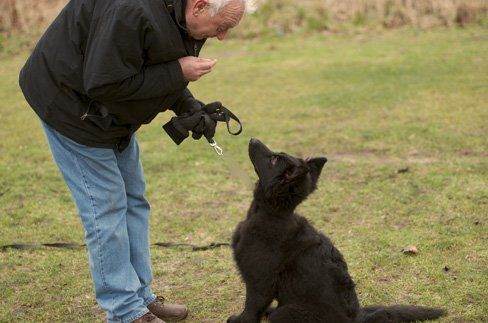FEAR AGGRESSION REACTIVE DOGS

LAYMAN description
It has become an epidemic problem, the" reactive dogs " fear aggressive dog I prefer to call them but why is it that we have so many cases of this problem. very simple dogs don't have memory they use association, so a bad experience with another fear aggressive dog is going to create a very bad association with my dog in the future with other dogs. the first reaction of the owner of the dog when barks , lunges at other dogs they pull change direction an reprimands his/her dog, because is dangerous, embarrassing,unacceptable. The problem is that when we pull the leash and say NO I am creating a worse experience in my dog's brain the dog was terrified and now I even give him scolding with words.. when I pull the leash if the dog was in level 4 of rage with the pulling I send my dog at level 6, 8 of rage , but not only that my dog gets confused and now thinks that I want him to get that aggressive sounds complicated right. but it is very straight forward and SIMPLE if we do the approbate therapy. remember we talked that dogs use association to learn so I have to create a pleasant association in my dog's brain instead of the unpleasant association. everything is going to be pleasant and unpleasant associations. instead of UNPLEASANT associations we need PLEASANT associations. so next time we see a dog the therapy is created very pleasant association betaking to the owner of the other dog in Avery friendly way and create in my dog a calm state of mind. dogs don't understand words so I usually use words that I like, very silly words but words that I can talk with pleasure like APPLES, BANANAS , TANGO etc. there is more to it than that of course like we need a very good obedience because as an example my dog is pulling me to get to the other dog there is nothing I will be able to do by the time I get there, but if my dog arrives there in perfect heel walking at my side I have the opportunity of creating the space for a pleasant ASSOCIATION. there are many other ways to create pleasant association this just one example.
Technical and psychological description of method and procedure
In animals, behaviour is controlled by the endocrine system and the nervous system. The complexity of the behavior of a dog is related to the complexity of its nervous system. Generally, dogs have a great capacity to learn new responses and thus adjust their behavior.
Dogs do not understand the past , they live in the moment , that is why we can reprogram them TODAY . They associate events with pleasant and unpleasant events , a dog that has been abused by an alcoholic owner , will react at the scent of alcohol as a trigger to the abuse he/she suffered ,so the next time that a human with alcoholic scent in his/her person even if they behave in the most of friendly manners the dog will react with absolute distrust because of the association of the scent present .
Relates to previous events by association and react in self defense , even if the other dog is not attacking him /her .When we through controlling the event (obedience exercises like sit and stay) of interacting with other dogs use a pleasant outcome as a result of the exercise , he /she starts associating the event with something pleasant , the association is reprogrammed
Man has been training dogs for over 3000 thousand years and yet the modern man is enjoying less benefits than his predecessors.
Dog training is not only teaching a dog to sit. It is important as a control exercise in any given circumstance, but there are more important issues than for the dog to obey a simple obedience command. For us the three most important goals of dog training are:
At a later stage in the training the dog will come to understand the use of command words or hand signals given on their own . In a short time the dog will recognize words such as "out", "car", "walkies" and will respond accordingly.
To insist that a dog repeats a given exercise many times over not only allows the dog to perfect the performance of the exercise but it also helps the dog in refining his personality.
Our dog training courses are conducted in public areas for several reasons the most important being that it allows the dog to experience and respond to "real-life" situations such as dealing with other dogs, humans and vehicular traffic.Dogs who have never been exposed to such normal conditions of everyday living often tend to be overly aggressive or exaggeratedly submissive if forced to deal with situations and encounters outside the seclusion of their own home territory.It is imperative that any dog must be able to cope with visits to "the outside world" be it to the veterinarian or a weekend break away with his family.
Excessive aggressiveness, jumping on people, digging holes, chewing things, bolting when doors or gates are open, house braking, extreme shyness, pulling while walking on the leash, accepting food from strangers and all the problems that involve dog behaviour can be sorted.
There is more than one formula for each specific problem , but obedience training , is the first and most one if you want long term results.
Each of our training courses lasts approximately seven weeks. The classes are held Monday through Thrursday.